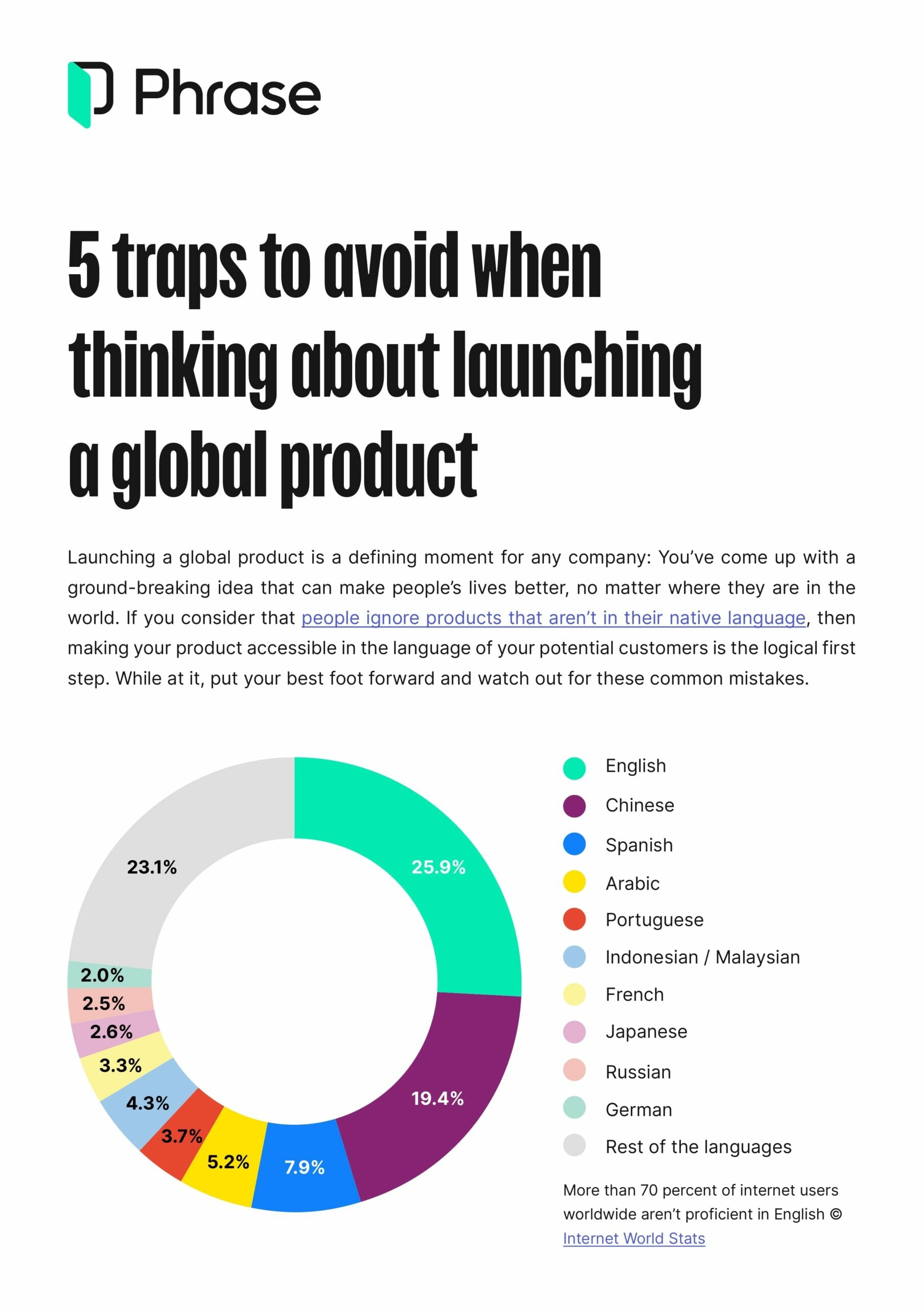Global business
How to Build the Right Market Positioning for Your Product

For any growing business setting out on a global expansion journey, market positioning becomes one of the first crucial steps. It’s all about effectively differentiating yourself from competitors and creating a unique value proposition for customers.
Think of Coca-Cola and Pepsi for a moment: Although they offer similar products, both have distinct identities. Coca-Cola is positioned as a timeless, traditional beverage, while Pepsi is perceived as a youthful, energetic alternative.
To help you, too, make the most of this opportunity, this comprehensive guide will walk you through the essentials of market positioning—from its meaning and common types to the benefits and key strategies for lasting success.
What is market positioning?
Market positioning is the strategic act of establishing a unique and favorable perception of a product or brand in the minds of consumers compared to competitors.
Essentially, market positioning makes a promise to customers, conveying the value a company offers above other options and showing why it’s the best choice.
When positioning a brand, businesses should go beyond simply selling a product or service and deeply understand the needs and preferences of their target audience during market entry.
Conducting extensive market research and analyzing consumer behavior can provide a business with valuable knowledge on each target market that they can use to position their offering effectively and prepare for market expansion. This means creating distinct customer personas to determine needs, identify problems, and create unique solutions.
Brand vs product positioning
Brand positioning and product positioning are distinct, interconnected concepts that make up every strong market positioning strategy. While brand positioning creates the overarching perception of the brand, product positioning shapes how a particular offering is perceived compared to competitors.
- Brand positioning creates a unique and compelling brand image in the minds of consumers: It shapes your customers’ overall perception of your brand, including its values, personality, and associations.
- Product positioning aims to establish a specific product within the market: It emphasizes the unique features, benefits, or solutions your product offers.

FREE DOWNLOAD
5 traps to avoid when thinking about launching a global product
Most people ignore products in languages that they don’t speak, so give yourself the best chance of success by avoiding these 5 common mistakes in global expansion.
Why is market positioning important?
Without effective market positioning, you run the risk of leaving your brand and product reputation to chance. At best, consumer beliefs and images of your offerings may fail to reflect your goals. At worst, harm to your brand impacts your profitability. That’s why it’s essential to get market positioning right the first time. Let’s have a look at some of its core benefits.
- Market positioning allows businesses to establish a unique identity in the market: When you differentiate yourself from competitors, you can attract customers who seek specific benefits or solutions.
- It also impacts consumer perceptions and purchasing decisions: When a product is positioned effectively, your customers are more likely to perceive it as superior and willingly pay more.
- Finally, market positioning helps businesses build long-term customer loyalty: By consistently delivering on their promises, companies can develop a strong brand reputation and create a loyal customer base.
Types of market positioning
You have many positioning choices available to you depending on the nature of your product or brand. Each type of market positioning strategy caters to different customer needs and competitive landscapes. The key types of market positioning include:
- Product attributes positioning: This positioning type focuses on specific product attributes that differentiate it from competitors. For example, a smartphone company may position its product as having superior camera quality compared to other brands.
- Price positioning: Price positioning involves positioning a product as being affordable or targeting a specific price range. Companies may position their products as high-end and premium priced or as value-for-money options.
- Quality positioning: Quality positioning emphasizes the superior quality of a product compared to competitors. Companies may highlight factors such as durability, reliability, or exceptional craftsmanship to justify a higher price point.
- Usage positioning: This type of positioning focuses on the specific use or application of a product. For example, a laundry detergent may position itself as the best choice for removing tough stains.
- Competitor positioning: Competitor positioning involves directly comparing a product to competitors. This type of positioning is commonly used when a product offers clear advantages over competitors in terms of features, performance, or pricing.
Successful market positioning examples
To illustrate the concept of market positioning, let’s explore some real-life examples of successful marketing positioning:
- Apple: Apple has positioned itself as a brand synonymous with innovation, high quality, and user-friendly design (“Think Different”). Its products are known for their sleek aesthetics, intuitive interface, and seamless integration across devices.
- Volvo: Volvo has positioned itself as a brand synonymous with safety (“For Life”). Its vehicles are known for their advanced safety features and commitment to protecting drivers and passengers.
- Nike: Nike has positioned itself as a sports and fitness brand that inspires customers to push their limits and achieve greatness (“Just Do It”), emphasizing empowerment and motivation in its marketing campaigns.
- Airbnb: Airbnb’s market positioning (“Belong Anywhere”) revolves around providing unique travel experiences by offering accommodations that allow travelers to feel like locals and truly immerse themselves in the destinations they visit.
- Coca-Cola: Coca-Cola has positioned itself as the classic, timeless cola beverage, with its latest tagline (“Taste the Feeling”) highlighting the emotional connection that consumers have with Coca-Cola’s refreshing taste.
What is a market positioning strategy?
A market positioning strategy refers to the overall approach a business takes to position its product or brand in a target market. An effective market positioning strategy clearly defines the 4 Ps: product, price, place, and promotion.

With a market positioning strategy, you ensure that you understand customer needs and have both a unique selling point (USP) and a unique value proposition (UVP). It will also guide all promotion efforts and shapes how a company communicates with its target audiences. By consistently delivering the message and reinforcing the desired image, your business can build brand awareness and loyalty among consumers.
How to develop a market positioning strategy
Developing an effective positioning strategy requires careful planning and consideration for companies to create a strong market presence and gain a competitive edge.
By understanding the target audience, identifying the USP, analyzing the competition, and effectively communicating the desired image, companies can create a strong market presence and gain a competitive edge.
Here are some essential steps to creating a market positioning strategy:
- Conduct market research: Start by understanding your target market and its needs. Conduct extensive research to gain insights into customer preferences, competitor offerings, and market trends.
- Define your target market segment: Clearly define the specific market segment you aim to target. Consider factors such as demographics, psychographics, and purchasing behavior to create a detailed customer profile.
- Identify unique selling points: Determine what sets your product or brand apart from competitors. Identify the unique features or solutions that resonate with your target audience.
- Define a unique value proposition: Craft a clear statement that communicates the exclusive benefits and value your product offers, setting it apart from the competition.
- Create a consistent brand image: Ensure that all marketing efforts align with the desired positioning strategy. From brand messaging and visual identity to customer interactions, consistency is key in establishing a strong market presence.
That being said, market positioning is an ongoing process that requires continuous monitoring and adaptation. As consumer preferences and market dynamics change, you need to stay agile and adjust your positioning strategy accordingly. This may involve reevaluating the target audience, refining the USP, or even repositioning the brand entirely.
Measuring the impact of your market positioning strategy
Measuring the impact of market positioning is essential to evaluate the effectiveness of your strategy and make necessary adjustments. While the specific metrics may vary depending on the nature of your business, there here are some key indicators to consider.
| Key metrics for assessing market positioning effectiveness | |
| Market share | Monitor changes in market share to determine the extent to which your positioning strategy is attracting customers and driving growth. |
| Brand recognition | Measure brand awareness metrics, such as aided and unaided recall, to find out how well your market positioning has helped establish your brand in the minds of customers. |
| Customer perception | Conduct customer surveys or gather feedback to gauge how customers perceive your product. Assess whether it aligns with your desired positioning. |
| Sales performance | Analyze sales data to assess the impact of your positioning strategy on revenue generation. Look for trends or patterns that indicate success or areas for improvement. |
| Competitor analysis | Continuously monitor competitor positioning and compare it to your own. Identify areas where you may need to refine your strategy to maintain a competitive edge. |
Market positioning is the key to global success
Market positioning is an integral component of any global expansion strategy. By effectively positioning your product or brand in different target markets, you can differentiate yourself from competitors, grow your customer base, and build long-term loyalty.
Whether through product attributes, price, quality, usage, or competitor comparison, positioning strategies play a crucial role in shaping customer perceptions and influencing purchasing decisions.
Finally, continuously evaluating the impact of your positioning strategy and making adjustments as needed can help you stay ahead in a competitive market.





